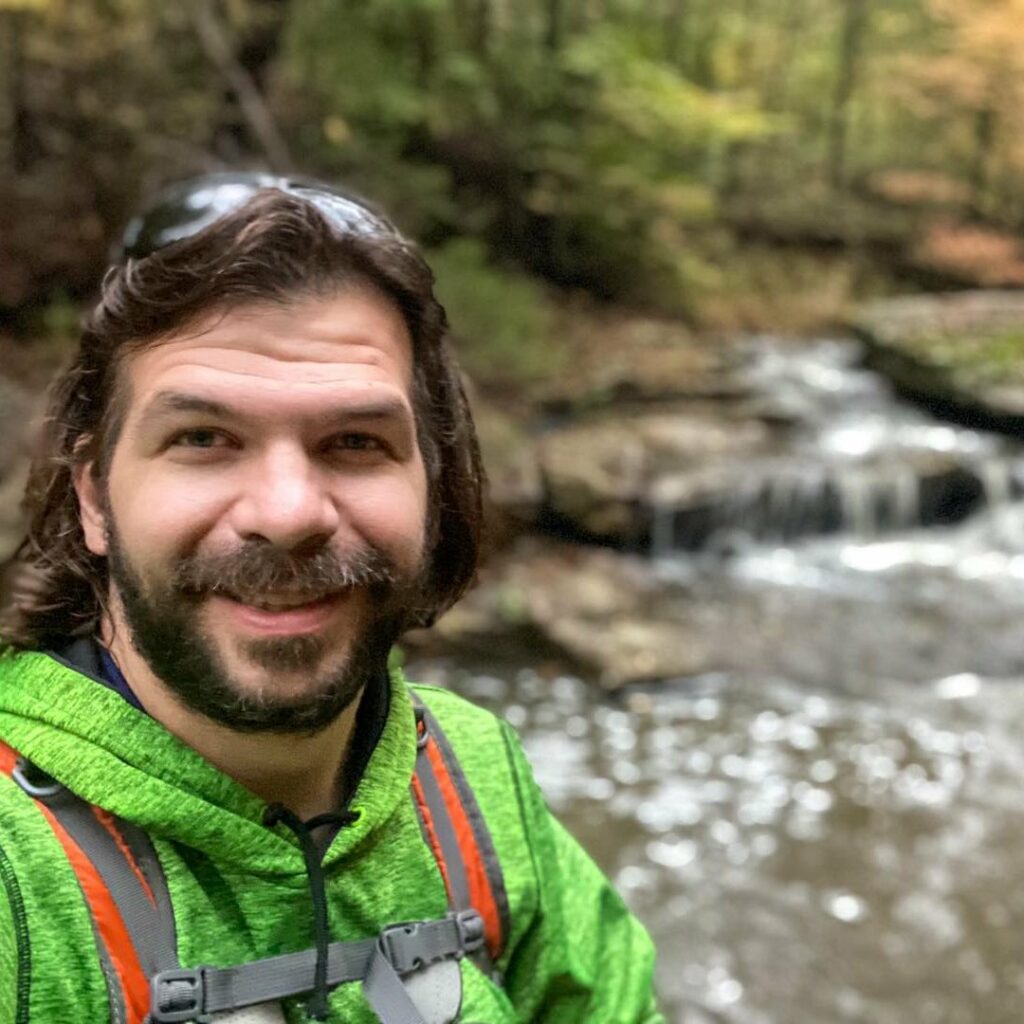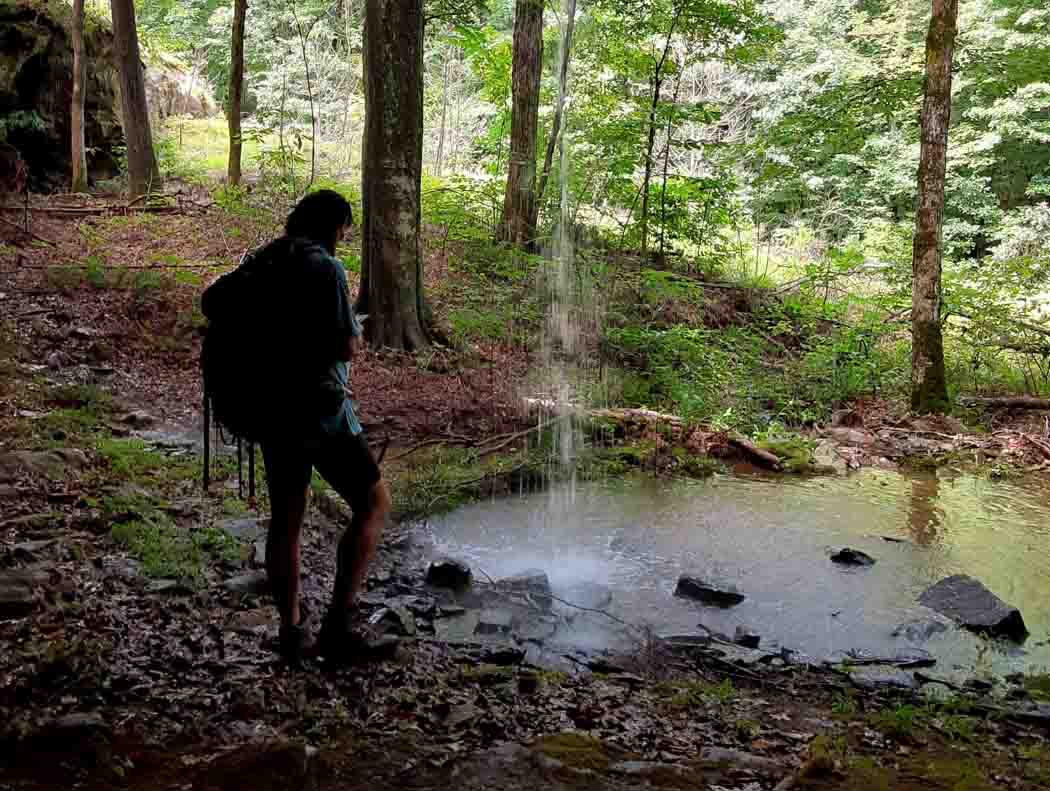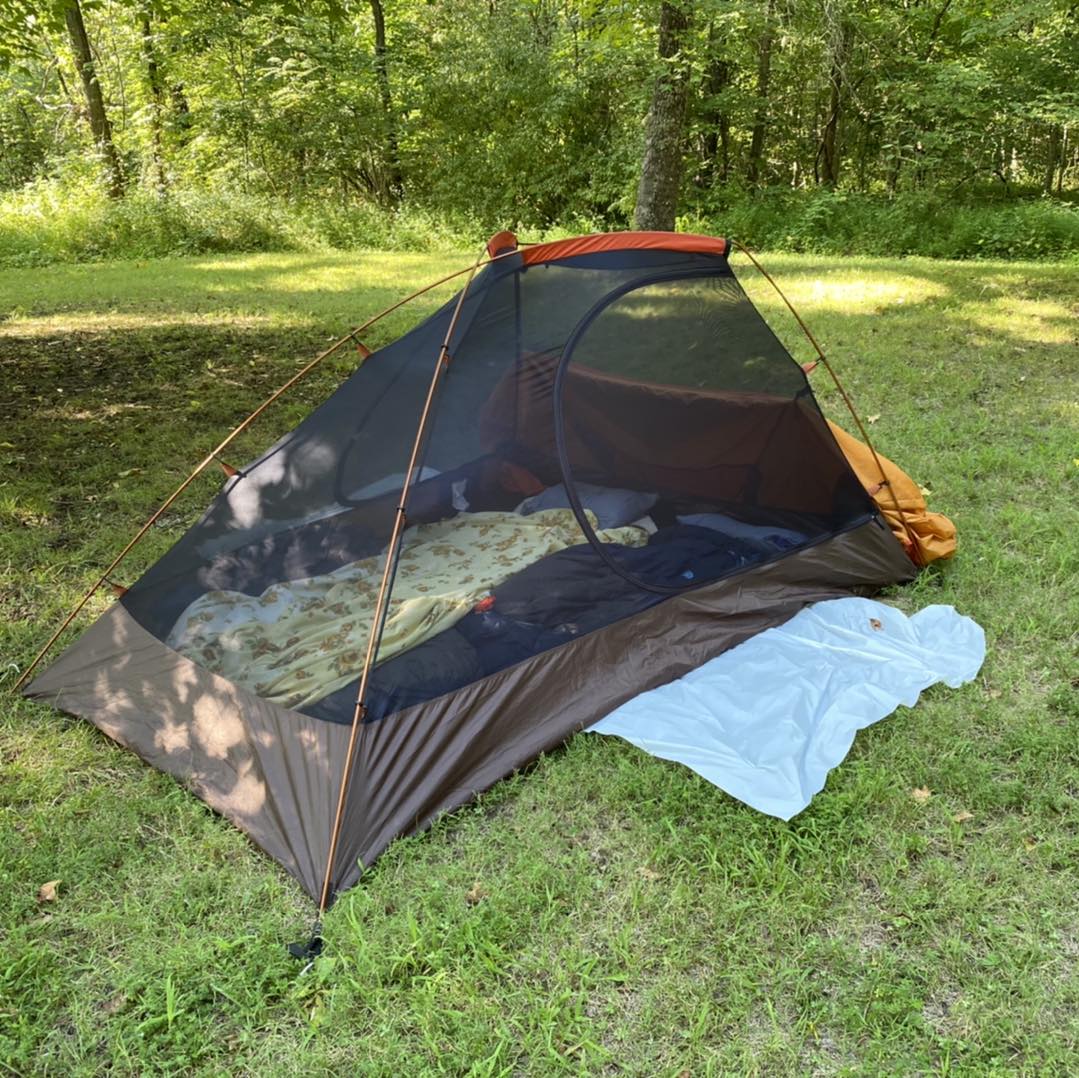Ultralight Backpacking Guide
Ultralight backpacking is a type of multi-day hiking that emphasizes bringing less amounts of gear and focusing on lighter-weight items.
The idea of going backpacking with ultralight in mind is for when you want to go faster, travel farther, and reduce weight on your body in the process. It’s not for everyone. Some of us require more gear for our trips. It can even test your comfort level, but if you try it and like it, it can be very beneficial for you.
This guide is all about ultralight backpacking and how to get into it.
NOTE: This guide contains affiliate links. Buying from these links will earn me a commission, but it will not impact your price.
What is Ultralight Backpacking?
As I said before, think of ultralight backpacking as multi-day hiking, but when you focus on bringing lighter weighted gear or less gear in general.
Your goal is to minimize gear and weight. This will open your hiking experience up to many additional benefits you wouldn’t have had before.
Most of the time, ultralight backpackers aim for a pack weight (loaded) of 10 pounds or less. Some have even smaller goals than that.
The gear used is often purchased from ultralight gear manufacturers or created homemade with materials used to take weight away. Many fancy features included with most modern gear aren’t included as it will increase the weight.
Ultralight backpacking isn’t for everyone. In fact, it can be uncomfortable for those who require more gear. It’s definitely something to try out on a smaller trail before you try to really get into it.
Why Go Ultralight Backpacking?
There are many benefits to ultralight backpacking that might encourage you to give the form of hiking a shot.
Carrying less or lighter gear will significantly lessen the strain on your body. This will help prevent fatigue and even injuries that often occur when you’re carrying a lot with you on a backpacking trip. Ultralight backpackers are picky about what they carry to be able to reduce as much weight as possible.
By carrying less or lighter weight gear, you can increase two things – mileage and speed. If you have less on your back and shoulders, you can hike faster. When you hike faster, you increase your mileage and distance. If you want to see more or cover more ground, ultralight backpacking might be your best option.
Carrying less gear also teaches you how to be more reliant on what little you have. You’ll learn ways to use one piece of gear for multiple purposes. We rely too much on our gear these days. Going ultralight brings us back to the primitive style that we once had to live by before modern-day conveniences.
If the benefits above outweigh your reasons not to try ultralight backpacking, maybe you need to try it after all and see if you like it.
Ultralight Backpacking Gear
The following gear items are what you might take with you on an ultralight backpacking trip.
Some ultralight backpackers take less. Some might take more. It really depends on the person and how much weight they wish to cut.
The main idea here is to figure out ways you can take one piece of gear and use it for multiple activities so that you can leave out gear that you don’t need.
Backpack
There are many backpacks to choose from.
Most ultralight backpackers go with backpacks made for ultralight backpacking trips. These packs are often made with lighter materials and have fewer features. More features often mean more weight.
The less liter capacity you get in a backpack, the less gear it will hold. Sometimes, it’s best to choose fewer liters in order to train yourself to carry less gear.
All you really need is one big pocket to store stuff in. The more pockets and zippers the bag has, the more weight will be added to it.
Shelter
There are many options for shelters in ultralight backpacking.
Some backpackers prefer a tent. Some go with a hammock. Many use bivy-styled systems. You might even just use a tarp. The more extreme backpackers don’t use anything at all. What you use depends on your comfort level.
Just look for products that weigh less or have been made for the ultralight community.
Sleeping Bag
There are many options for sleeping bags.
You can get a mummy bag, a quilt, or even a sheet. The warmer the cover, the more likely it will be heavier in weight. Some ultralight backpackers don’t use covers at all. Again, it depends on your comfort level.
Sleeping Pad
Sleeping pads are optional but often left at home for ultralight trips.
Again, it has to do with personal comfort. I typically go for foldable foam pads cut in half for sleeping pads. I just want something under my back. I can use it as a sit pad, too.
Food and Water
These should make up most of your weight.
Staying hydrated and fueled during your ultralight backpacking adventure is essential.
If you know your route won’t have any water resupply points, you’ll need to bring enough water with you. That might add extra weight to your pack. Never try to skimp on water and risk dehydration. Being ultralight isn’t worth being dehydrated.
If you know there are creeks and water supplies along your route, bring a water filter with you to resupply when you need it. If you know there is water, then you can pack less water and use your filter to save on weight.
Food is also essential. Food can add a lot of extra weight, but you have to have it to keep yourself fueled up and prevent fatigue and loss of energy.
Luckily for us, many hiking snacks and freeze-dried meals are really lightweight. And many of these options are full of the healthy calories, carbohydrates, and vitamins that we need to keep hiking. The great thing about most meal pouches is you can add boiling water to them and eat them right out of the bag. That takes away any need for a cook cup or bowl and saves weight.
You can stay hydrated and fueled up while also making sure you save weight.
Kitchen Gear
The amount of kitchen gear is based on your needs.
A fuel canister, cook cup, and pocket rocket stove do add weight. If you can make a small fire, a fire starter and cook cup would weigh less, but the fire creates more risk and may not always be feasible, especially when everything is wet.
Try to keep in mind using one piece of gear for multiple uses.
I can use my cook cup to boil water for my meal pouch and also for my morning coffee. I don’t need a very big cup to accomplish any of this. I’d rather boil water two or three times to save weight by using a smaller cup.
Use only what you really need in order to cook your food and hot drink. You could also skip the kitchen supplies altogether and go for a cold meal (like cold oats) instead.
Safety Gear
You should have at least some minimal safety gear on your ultralight backpacking trip.
A small Ziploc bag with some essential first-aid kit items is a good idea. I’d put a few band-aids in mine along with a few alcohol prep pads, diarrhea pills, Ibuprofen, and maybe some medical tape.
You should also carry a small whistle in case you need it to communicate in a situation where you need help. A small signal mirror might also be a good idea.
A small gear repair kit with a knife or multi-tool is another good item to pack.
Navigation Gear
You need to be able to navigate your way through the forest.
They make small plastic compasses that weigh practically nothing. You can print off a map and cut off what you actually need to make it smaller. The InReach PLBs are practical for ultralight backpacking. Your smartphone can do most of what you need, but you might need a charger and battery pack just in case.
Just make sure you can get yourself unlost just in case you get lost.
Sun and Bug Protection
Don’t let the sun burn your skin or the bugs eat you alive.
Go to a Dollar Store and get a small pocket-sized bottle of sunblock, bug spray, and hand sanitizer.
That’s really all any of us need on a hiking adventure.
Lighting
Bring a headlamp with some extra batteries.
Extra Layers
Extra layers are always a good idea, especially to stay warmer on cooler nights.
But extra clothes mean extra weight.
I am a fan of insulated compression clothing for running. It’s very lightweight and can be effective for layering. It’s also easy to pack. Merino wool is great for even colder nights.
Treat yourself and bring a clean pair of socks for sleeping in.
Rain Gear
A simple oversized rain poncho is great if you need to stay dry. You can even utilize it as a shelter to make it have multiple uses.
Clothing and Footwear
Your clothing and footwear are based on your comfort level.
If it’s not too cold, a pair of running shorts or biker shorts is lightweight enough to wear. You can wear a simple short sleeve or tank made with synthetic materials.
For colder trips, go with insulated or Merino wool tights or leggings. Get an insulated running shirt and a thin jacket.
Wear comfortable padded socks. You have to take care of your feet.
Choose some gloves and a beanie if it’s colder. Take arm and leg warmers if they might warm up enough to go from winter to summer clothing styles.
A lot of the stuff a cyclist would use for layering is perfect for ultralight backpacking.
As far as footwear is concerned, this depends on your needs. I’ll always choose waterproof boots in the winter. If it’s warm out, I’ll go with trail runners.
Without putting yourself in freezing danger, having less clothing or lighter clothing material will help keep the weight down.
Personal Items
Make sure you bring any needed personal items.
This might be for personal hygiene, dental care, and even some wet wipes or TP, just in case you have to go in the woods.
Trekking Poles
You may need a trekking pole, or you might not need one. If you do decide to get one or two, key the telescopic ones so you can store them easier when you’re not using them.
Ultralight Backpacking Mistakes
Some mistakes can be made when trying out ultralight backpacking that you should try your best to avoid.
You should do your first trip on a shorter trail for a few reasons. If, in the middle of the night, you find yourself unable to do it, you’ll have an easier trek back to where you started. The other reason is that this kind of backpacking isn’t for everyone. If you go on a longer trip and have nothing but bad experiences, it could make you hate hiking altogether, let alone ultralight backpacking. Start small and see if it’s even for you to begin with.
Not bringing the right gear can be a big mistake. If you can’t keep warm on a cold night, your trip is going to be miserable and maybe even dangerous. If you don’t bring enough food and water, you could be placed in a bad situation. It’s important to bring less gear, but it’s even more important to bring the right gear.
You could also choose the wrong gear. You might get gear on the cheap, but it might not take much of the weight away. If that’s the case, you might not be able to cut the weight you need to in order to be lighter weight.
Most of the time, you can avoid mistakes by thinking first and looking at all your possibilities.
Final Thoughts About Ultralight Backpacking
Ultralight backpacking is a great way to extend your backpacking experience. But it isn’t for everyone. Take the considerations of this guide to determine if it’s right for you or not.
If you’ve enjoyed this guide, please share it with others that you know might enjoy it.
If you’d like to support my efforts in creating this guide, I welcome one-time donations or monthly support if you’d rather do that. It’s totally up to you and you’re not ever obligated to donate.
Be sure to subscribe to my free monthly newsletter for more hiking tips and resources.
And until next time, I’ll see you on the trail!
Please Support Hiking with Shawn
Alrighty folks, I hope you have enjoyed this content. I provide it for free and it takes a while to create. If you would be so kind enough to support my efforts, you can do so by sharing this post with others, especially on social media. Be sure to subscribe to my YouTube Channel to see my latest videos, shorts and live streams. Follow me on Facebook, Instagram, Twitter and TikTok for unique content that you will only find on those pages. You might also join my Southern Illinois Hiking & Outdoor Resources Group on Facebook, too!
You can also support me by becoming a Patreon Supporter for as little as $3/month and you can cancel anytime (no contracts or catches). Patreons get access to extra features, exclusive articles, sticker packs, gifts and more. Consider buying official Hiking with Shawn Merchandise as another way to support me. I spend a lot of money on Hiking with Shawn and because of extremely high public land permit fees, I make very little money in return so everything helps.
Thanks again for checking out another one of my articles and until next time, I’ll see you on the trail!

Shawn Gossman
Founder, Hiking with Shawn
Howdy folks! My name is Shawn Gossman and I founded Hiking with Shawn. I’m an avid hiker, cyclist and outdoorsman here in the Shawnee National Forest. I was born and raised in Southern Illinois and never want to leave. Click here to learn more about Shawn Gossman



